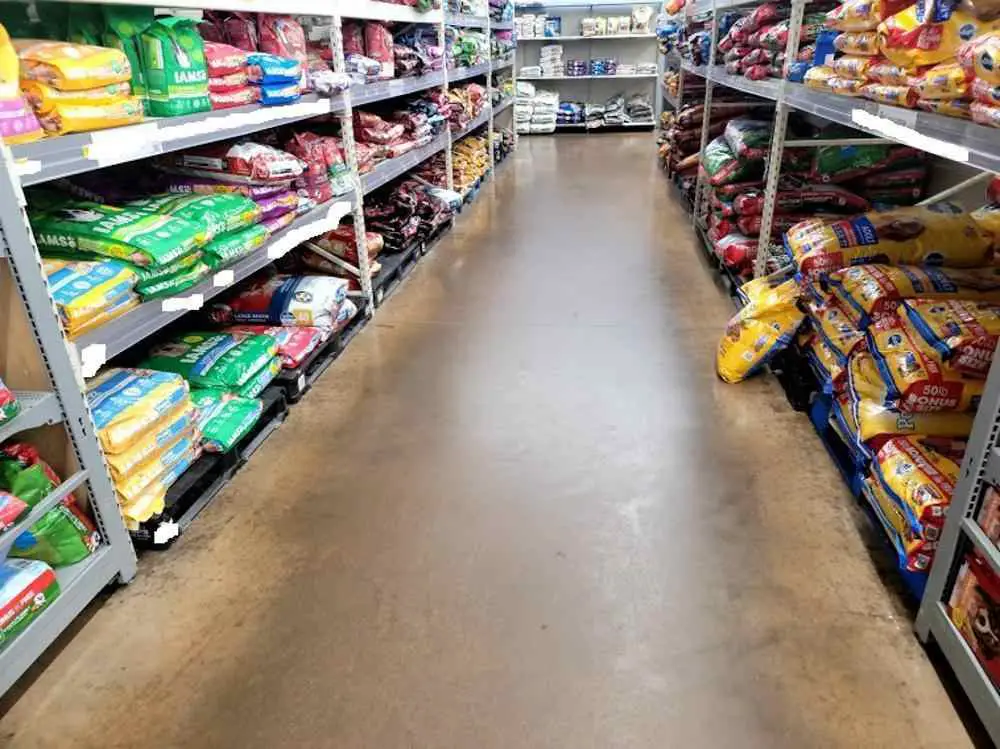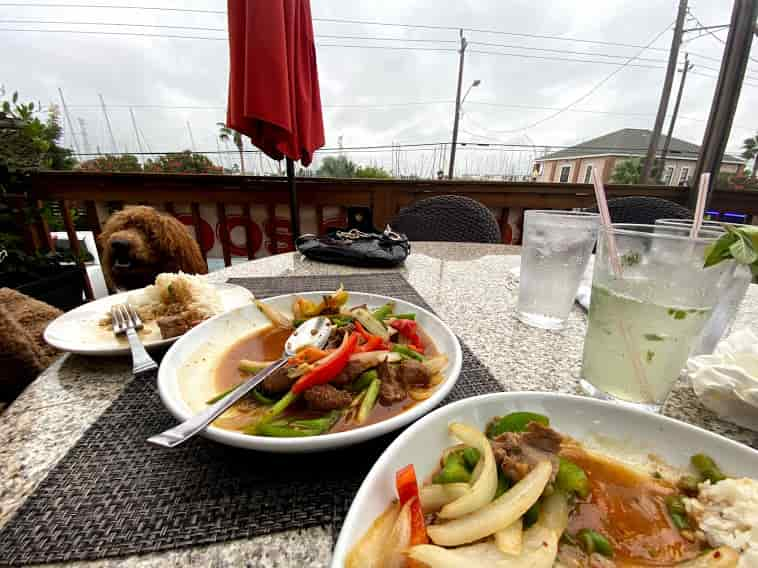Last updated on September 18th, 2021 at 05:11 pm
When you bring your new furry friend home from the shelter or the breeder, one of your first concerns is probably going to be about what to feed your new little friend. There are a lot of opinions out there about which food is the best, and I’m not going to advocate for any specific brand, but I will mention a few that have seemed to work for poodles as well as some that are good for small breeds. I will also talk about the pros and cons of feeding your toy poodle kibble versus feeding your toy poodle raw (unprocessed) food. Kibbles are ground and processed dog food (usually dry) that are shaped into tiny pellets. I will also discuss the best ingredients that should be in your toy poodle’s food.
For standard poodles, check this article on the feeding guide for standard poodles and the best food for standard poodles.
We have also included in this article a calculator that lets you calculate how much food to feed your toy poodle based on its weight, age, spay/neuter status, and activity level.
Kibble or Raw?
Most new poodle owners want to start with kibble because it is much easier to prepare and it doesn’t smell nearly as strong. However, there is a large and growing community of people who believe in raw feeding. This community believes that dogs were meant to eat raw food, and they try to mimic what a wild dog would eat when they prepare food for their dogs. They usually connect with a local slaughterhouse or locker so they can use bones and other parts of hogs or cows that are not used for human consumption. Some people simply purchase bone-in meats from the grocery store.
It is important to note that dogs who are fed a raw diet must be fed on a strict schedule, as their blood sugars can drop when they eat a raw diet. This is especially true for small breeds such as the toy poodle.
Another drawback of raw feeding is that there is a higher risk of bacteria and parasites in raw food, which can also be risky for a small breed that tends to have a weaker stomach.
Some companies have started making pre-made raw food that comes in frozen tablets so you can just defrost and serve.
Proponents of raw feeding claim that your dog’s coat will be healthier and shinier, his muscles will be stronger, and he will have a longer life expectancy. You can read more about the pros and cons of raw feeding here.

Best Food for Toy Poodles
If you’re like many owners, you’ve decided that raw feeding is just too much of a hassle. Your next decision will be to decide which type of kibble is best. You will want to look at the ingredients on the bag of dog food and be sure to choose a food that is high in protein and doesn’t have a lot of additives.
We have researched for you great dog food for toy poodles. Click on the link to check out these best-rated dog food brands on Amazon.
- ORIJEN Dry Dog Food: Grain Free, High Protein, with Fresh and Raw Animal Ingredients
- Wellness CORE Natural Grain-Free Dry Dog Food
- Hill’s Science Diet Adult 7+ Dog Food: For toy poodles 7 years or older
- Earthborn Holistic Primitive Natural Dry Dog Food
Some of these brands have different formulas for puppies and adults. Others have all-stages formulas which are suitable for both a puppy and an adult dog. Be sure to purchase the formula that best fits your poodle’s age and needs.
Some formulas help control weight, while others are specifically designed for poodles with allergies. Keep in mind that the brand that works best for some poodles will not necessarily be the best brand for another poodle. You can always switch your poodle’s food if you find that she is not doing well on the kibble you have chosen. However, it is important to give your toy poodle ample time to adjust to the new food before you start making the switch.
Nevertheless, based on my assessment, the best food for toy poodle is the ORIJEN Puppy Dog Food (Grain-Free, High Protein, Fresh and Raw Animal Ingredients)
Click here to check out the ORIJEN Puppy Dog Food on Amazon.
Your Toy Poodle Breeder’s Food Choice
If you got your puppy from a breeder, they have probably already found a preferred type of food. Most new owners tend to stay with the brand of food the breeder suggests. Experienced breeders know a lot about their lines, and they have a vested interest in keeping those puppies in the best health. Chances are, they have done a lot of research and trial and error to find out which food works best for their specific puppies. Sticking with this food just might be your best bet.
However, if you get your puppy home and you notice an upset stomach and loose stools, you may be thinking about switching her food. Once you have ruled out worms or parasites as the cause of the stomach upset, you could start looking into dry dog food brands that we recommended above that toy poodles tend to do well with.
How Much to Feed a Toy Poodle. Toy Poodle feeding Chart and Calculator
For a more precise value of how many cups of food to feed your toy poodle, use our toy poodle food calculator to find a more accurate amount of food that your poodle requires, based on the specific food that you feed your poodle, your poodle`s specific weight, age, and sterilization status. See how to properly measure toy poodle weight here.
To calculate how much to feed your toy poodle, select the food that you give your toy poodle in our poodle food calculator below. The calculator comes prepopulated with a list of popular dog food and their respective calorie contents.
However, if the food that you feed your toy poodle is not on the list, just enter the kcal per cup of the food you feed your poodle in the food name box, and the calculator will help you calculate how much of the food to feed your poodle. You can find the kcal per cup on the bag or can of the dog food that you feed your poodle. The typical value for kcal per pup is between 300 and 400.
After selecting the food, fill in the information about your toy poodle (age, weight, sterilized or not, and activity level). Then press “calculate” to find out the right quantity of food that you should be feeding your poodle.
How to Switch Your Toy Poodle’s Dry Kibble Food
If you decide to switch your toy poodle’s food, start slowly. Don’t switch it all at once. Take the food that the breeder or rescue used for your poodle and slowly start to mix in the new brand of dog food. After a few days of small amounts of the new food, start giving your puppy a bowl of half the new food and half the old food, evenly mixed in together.
Some toy poodles are very picky eaters and will eat around their least favorite food, picking out the pieces of their favorite food. You can keep this from happening by feeding your toy poodle out of your hand. Many trainers highly recommend hand-feeding during the time your puppy is training, so you may be doing this already. If not, you can take a handful of evenly mixed food and feed your toy poodle from your hand to make sure that you are transitioning him from one type of food to another slowly.
Avoid Feeding Your Toy Poodle Table Scraps
Poodles can have more sensitive stomachs than some other breeds, so it is possible that your toy poodle could experience some gastrointestinal issues if he got ahold of some table food. Keep all human food up and out of the way and make sure all visitors know not to feed your poodle any scraps from their plates.

Talk with your Vet
If you have tried all of these different ways of feeding your poodle and you still feel that she has an upset stomach or that her stools are too loose, you may want to consult your vet about what type of food would be best for your poodle. This would also be a good opportunity to talk about the gastrointestinal issues you have noticed with your toy poodle and let your vet weigh in on what could be causing the issues. It may not have anything to do with the food choice, although most toy poodles will be happy and healthy once they get on the food that is best for them.

